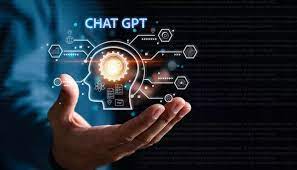In the realm of artificial intelligence and natural language processing, chat gpt stands out as a pioneering model developed by OpenAI. This advanced technology has revolutionized human-computer interaction by enabling machines to comprehend and generate human-like text. Here’s an in-depth look at what ChatGPT is, Otu esi arụ ọrụ, and its implications.
Overview of ChatGPT
ChatGPT belongs to a class of models known as Generative Pre-trained Transformers (GPT), which are designed to understand and produce human language. OpenAI released the first version of GPT in 2018, na kemgbe ahụ, it has undergone several iterations to enhance its capabilities. ChatGPT, specifically based on GPT-3.5, represents the culmination of these advancements, boasting impressive language understanding and generation skills.
How ChatGPT Works
Na isi ya, ChatGPT operates using a deep learning architecture called the transformer model. This architecture allows the model to process and generate text based on the patterns and information it has learned from vast amounts of data. ChatGPT is pre-trained on a diverse dataset containing a wide range of texts from books, Isiokwu, websites, na ndi ọzọ, which enables it to understand various topics and styles of writing.
When a user interacts with ChatGPT, they input text-based queries or prompts. The model then uses its understanding of language to formulate responses that are contextually relevant and coherent. This process involves analyzing the input, predicting the next sequence of words, and generating a response that mimics human conversation.
Applications of ChatGPT
The applications of ChatGPT are numerous and continue to expand as the technology evolves:
- Nkwado ndị ahịa: ChatGPT can assist with basic customer queries and provide information on products or services.
- Content Creation: Writers and content creators use ChatGPT to brainstorm ideas, improve writing, or generate content based on specific guidelines.
- Agụmakwụkwọ: ChatGPT serves as a virtual tutor, answering students’ questions and providing explanations on various topics.
- Creative Writing: Authors and storytellers use ChatGPT to explore new narrative ideas or overcome writer’s block.
- Language Translation: ChatGPT aids in translating text from one language to another, leveraging its multilingual understanding.
Ethical Considerations and Challenges
Despite its impressive capabilities, ChatGPT raises ethical considerations regarding bias in language models, misuse for spreading misinformation, and potential impact on human communication skills. OpenAI continues to address these concerns by refining the model’s training data and implementing guidelines for responsible usage.
Future Developments
Na-ele anya n'ihu, the future of ChatGPT holds promise for even greater advancements. OpenAI and other research teams are working on enhancing the model’s ability to understand nuances in human language, improve response coherence, and integrate better with real-world applications.
Mmechi
Na ngwụcha, ChatGPT represents a significant leap forward in AI-driven natural language processing. From its inception as part of the GPT series to its current iteration, ChatGPT continues to redefine how we interact with machines through conversation. As technology progresses, the potential applications and ethical considerations surrounding ChatGPT will shape its role in society, paving the way for more sophisticated AI systems in the future.

